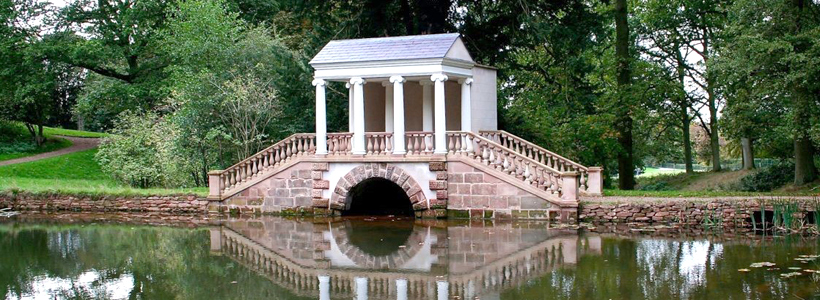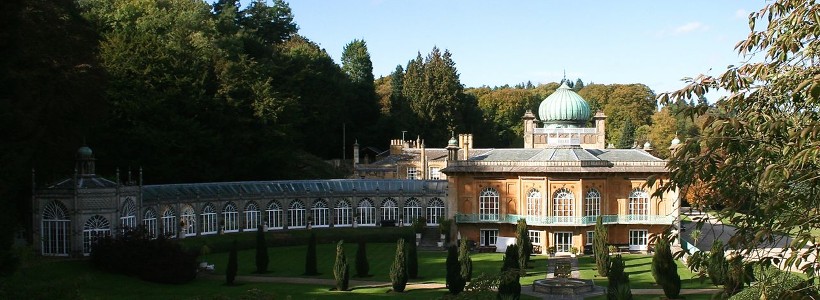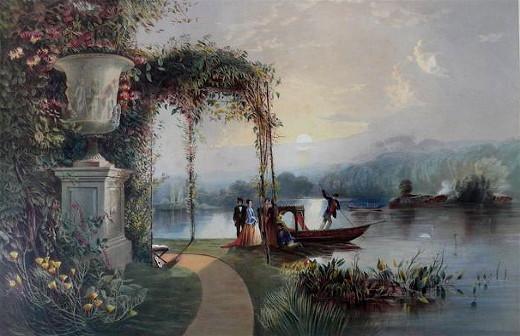

Regency Gardens
The approaching twin anniversaries of the deaths of Jane Austen, in 1817, and Humphry Repton, in 1818, have galvanised Tim into research on the Ornamental Gardens of the period 1790 to 1840, which has led to several lectures on the subject. The next one will be the annual Claridge Lecture at the American Museum in Bath to be delivered on Friday 18 May at 7.30 pm; it is entitled: 'A Tatste for Towers - Beckford, Disraeli, Gardens and the Lure of Italy'.
The gardens of the period are characterized by exuberant formal parterres, jewelled island beds of graduated flowers, frothy basket-work borders, shrubberies laced with flowers and over-arching trellises covered with rambling roses, jasmine and clematis; while the lawns, enamelled with spring bulbs, are enlivened with elegant vases, strewn with Chinese barrels for casual alfresco seating, cut with oval reflecting pools backed by specimen trees and dramatized by deep-delved grottoes and garden buildings in every conceivable style from Turkish to Indian. Each pleasure ground had its meshed aviary and pheasantry, there were fountains with writhing dolphins, rustic garden seats, thatched and pebble-floored, Swiss-style bridges, greenhouses and conservatories overflowing with exotics. These flowery paradises were readily accessed from the house via ground-length sash windows, tree-trunked verandahs entwined with climbers and conservatories arcing out from the house into the garden. By day they were ablaze with colour and by night, lit by coloured lamps hanging from the trellises and the trees, they sparkled and glittered.
© Copyright Timothy Mowl 2018. Email: mail@timothymowl.com


